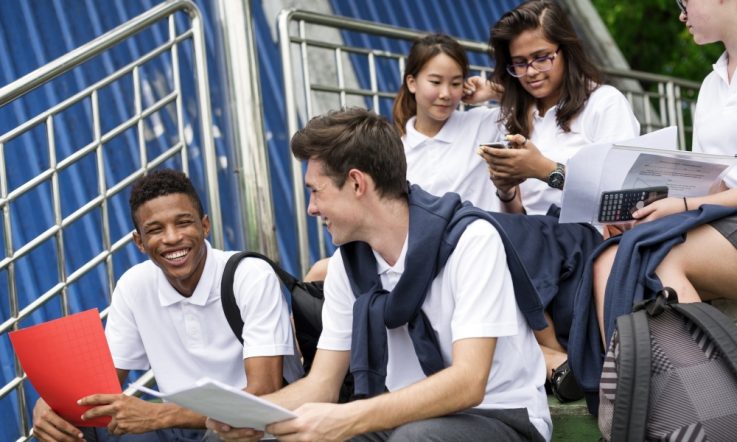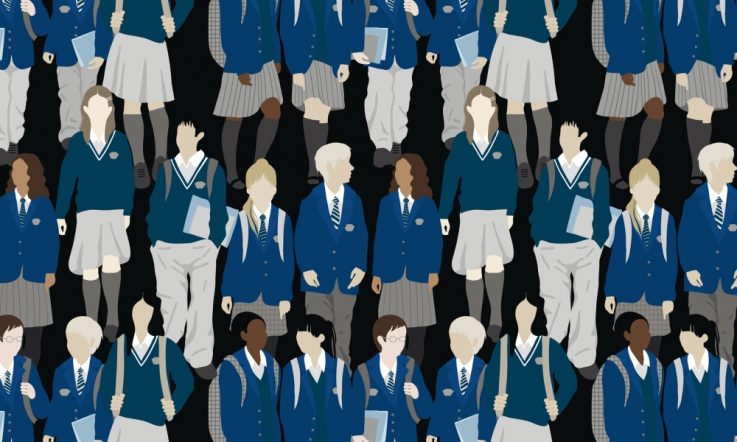Australian students' expectations of future study pathways have changed significantly in recent years, a new report published today by the Australian Council for Educational Research (ACER) has found.
PISA Australia in Focus Number 2: Educational Expectations – which analyses PISA (Programme for International Student Assessment) results from 2003 to 2015 – reports a shift in the expectations 15-year-old's have in terms of further education.
In 2003, 63 per cent of Australian students had expectations of continuing on to a university degree after school. In 2015, this had decreased to 54 per cent. For Indigenous students, there was a greater decrease of 15 percentage points for this expectation over the 12-year-period, from 43 to 28 per cent.
In Australia, eight per cent of students in 2003 had plans to further their education at TAFE, but by 2015 this proportion dropped to three per cent. In 2015, less than three per cent of students in Australia expected to end their education before completing secondary school (the OECD average is six per cent), with the report noting this proportion has remained relatively unchanged over the 12-year-period.
Although expectations of enrolling in university are declining, Australian data show there was an increase recorded for students who intended to complete Year 12 or a Certificate IV – from 23 per cent in 2003 to 35 per cent in 2015.
The PISA study collected data on students' educational expectations (what they believe they will realistically study) rather than their aspirations (what they wish to study). The report says knowing the educational expectations of students is important because: ‘… holding different expectations for future education can impact on students' current experiences of education influencing their motivation, behaviour and achievement at school now.'
Understanding students' expectations of future study pathways can help inform decisions about which aspects of education need our attention most, it adds. ‘What areas might need a make-over (to attract students to fill a societal need), as well as providing an indication of the general ‘health' of an education system – are students being turned off further education?'
Across Australia, students' expectations varied greatly. The Australian Capital Territory reported the highest percentage of students expecting to undertake a university degree – 67 per cent of students. Proportions of students in Queensland, the Northern Territory and Tasmania expecting to complete a university degree were lower than this, but were similar to the OECD average (ranging from 44 to 46 per cent).
ACER Deputy CEO (Research) Dr Sue Thomson says there's a worrying pattern of disadvantage in the 2015 results ‘… with higher proportions of Indigenous students, students from remote schools and those from low socioeconomic backgrounds expecting to finish school before Year 11. This may well reflect the reality of life for these students, with financial constraints and access to universities having a greater impact on their decisions.'
The report notes: ‘Even among high achievers in 2015, expectations of a university degree were lower among students from the lowest socioeconomic quartile – 74 per cent compared to 92 per cent of high achievers from the highest quartile.'
Today's report also explores the educational expectations of students across countries. ‘Across the OECD countries in PISA 2015, 44% of students expected to complete a university degree. Over 75% of students in Japan, the United States, Colombia and Qatar expected to complete a university degree or Doctorate … compared to less than 30% of students in Austria, Germany, Latvia, the Netherlands, Norway, Slovenia, Switzerland and Russia.
The report says some of these results across countries could be tied to the flexibility of education systems: ‘… in countries with highly streamed educational systems, such as Austria, Germany and Switzerland, students enter streams focused on preparing them for different levels of further education relatively early on and opportunities for “switching” streams are limited.'
PISA Australia in Focus Number 2: Educational Expectations is available to download (7.4MB).
Thinking about your own school context, does the discussion around post-school destinations reflect the range of expectations students have?



